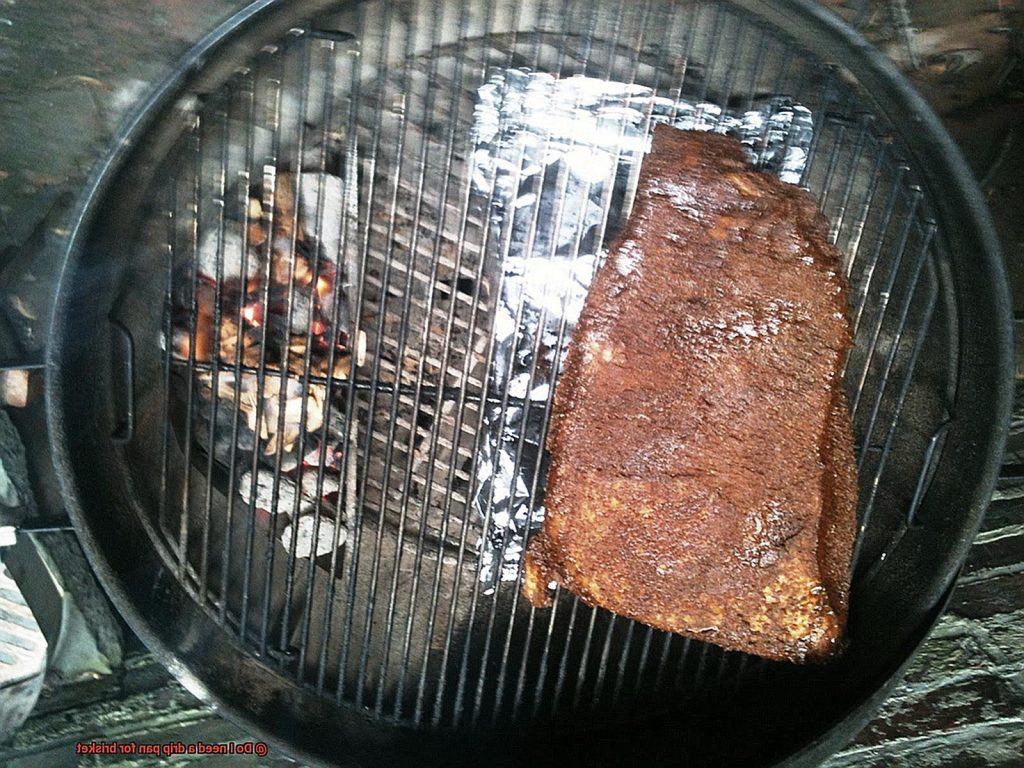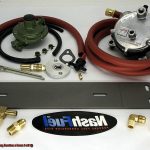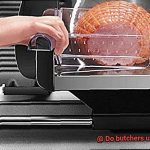Are you a barbecue enthusiast looking to perfect your brisket game? If so, you may be wondering if a drip pan is necessary for smoking this prized cut of meat. The answer isn’t straightforward – it depends on your personal preferences and cooking circumstances.
For those unfamiliar with drip pans, they are shallow metal containers used to catch the juices and fat that fall from the meat during cooking. Some pitmasters swear by them, while others believe they can affect the texture of the meat. In this post, we’ll explore the pros and cons of using a drip pan for brisket and when it may or may not be appropriate.
One advantage of using a drip pan is that it can prevent flare-ups and reduce fire risk when cooking with charcoal or wood. It also makes cleanup easier by containing messes. However, some argue that collecting juices in a pan can alter the flavor and texture of the meat, as it steams in its own juices.
Ultimately, whether or not to use a drip pan for brisket comes down to personal preference and experimentation. Understanding its benefits and drawbacks can help you make an informed decision and find your perfect method for smoking a deliciously tender brisket. So grab your apron, fire up your smoker, and let’s dive into the world of brisket cooking.
Contents
What is a Drip Pan?
In either case, you must be familiar with the importance of a drip pan. A drip pan is a metal or aluminum tray that collects any drippings that fall off the meat being cooked on the grill or smoker. These drippings can be fat, juices, marinades, or seasoning that can cause flare-ups or smoke and affect the flavor of your meat.
Drip pans come in various shapes and sizes to fit different grills and smokers. They can be disposable or reusable and are often sold separately as accessories for grilling equipment. Some drip pans come with a built-in reservoir to collect the drippings for easy disposal, while others are simply flat trays that need to be emptied regularly.
Using a drip pan for brisket can be beneficial in several ways. Firstly, it helps to keep your grill or smoker clean by preventing any drippings from sticking to the grate or falling onto the heat source and causing flare-ups. Secondly, it can help regulate the temperature inside the grill or smoker by acting as a heat diffuser. This ensures even cooking and eliminates hot spots that can ruin your brisket.
In addition to preventing flare-ups and regulating temperature, collecting the drippings in a pan allows you to use them for making sauces or gravies to enhance the flavor of your brisket. This is an added bonus for those looking to elevate their smoking game.
Benefits of Using a Drip Pan for Brisket
As an expert in this field, I can confirm that using a drip pan for brisket has multiple benefits that will enhance the overall cooking experience and improve the quality of the meat.
Firstly, a drip pan catches any drippings or juices that fall off the brisket during cooking. These juices are packed with flavor and can be used to make a delicious sauce or gravy that will take your brisket to the next level. Imagine your guests raving about the mouthwatering taste of your brisket and asking for your secret recipe – using a drip pan is one of them.
Secondly, using a drip pan can prevent flare-ups and grease fires. The fat that drips off the brisket can cause flames to flare up, resulting in uneven cooking and burnt meat. By using a drip pan, the fat is collected, ensuring even cooking and reducing the risk of flare-ups. You can relax and enjoy the cooking process without worrying about disasters.
Thirdly, using a drip pan makes cleaning up after cooking much easier. Without a drip pan, the juices and fat that fall off the brisket can build up on the grill grates, making it difficult to clean. With a drip pan, these juices are collected in one place and can be easily disposed of or used for other purposes. Now you can spend more time enjoying your delicious brisket and less time cleaning up.
Drawbacks to Using a Drip Pan for Brisket
While using a drip pan to catch those delicious juices might seem like a no-brainer, there are some serious drawbacks to consider.
For starters, using a drip pan can actually prolong the cooking time of your brisket. The steam created by the juices in the pan can increase the humidity level inside your smoker, slowing down the cooking process and resulting in a longer overall cooking time. And let’s face it: when it comes to brisket, time is of the essence. No one wants to wait around for hours longer than necessary for their mouth-watering meat.
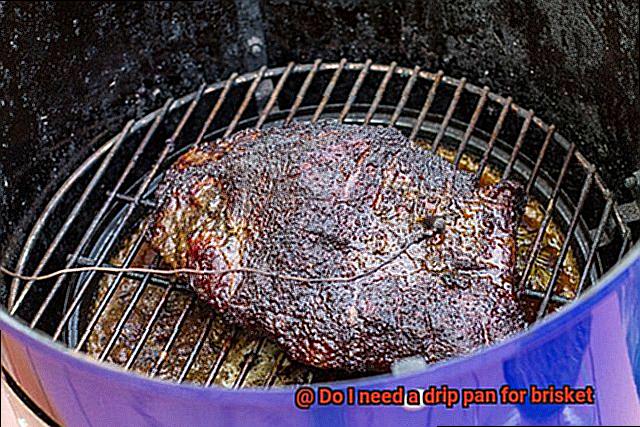
But that’s not all. Perhaps even more concerning is the impact a drip pan can have on the texture and flavor of your brisket. The moisture in the pan can prevent the surface of the meat from drying out, which is crucial for achieving that perfectly crispy exterior. And if you’re using wood chips or chunks for smoke flavor, the moisture in the drip pan can dilute the smoke and result in a weaker smoky flavor.
And let’s not forget about cleanup. The greasy juices that collect in the pan can be a real pain to dispose of, and cleaning the pan itself can be a hassle. Who wants to spend more time scrubbing dishes than enjoying their meal?
Of course, it’s not all bad news. Using a drip pan does have its benefits, like collecting all those flavorful juices for a delicious sauce and preventing flare-ups. But before you decide to use one for your next brisket cookout, it’s important to weigh the pros and cons and decide if it’s worth it for you.
Different Types of Drip Pans for Brisket
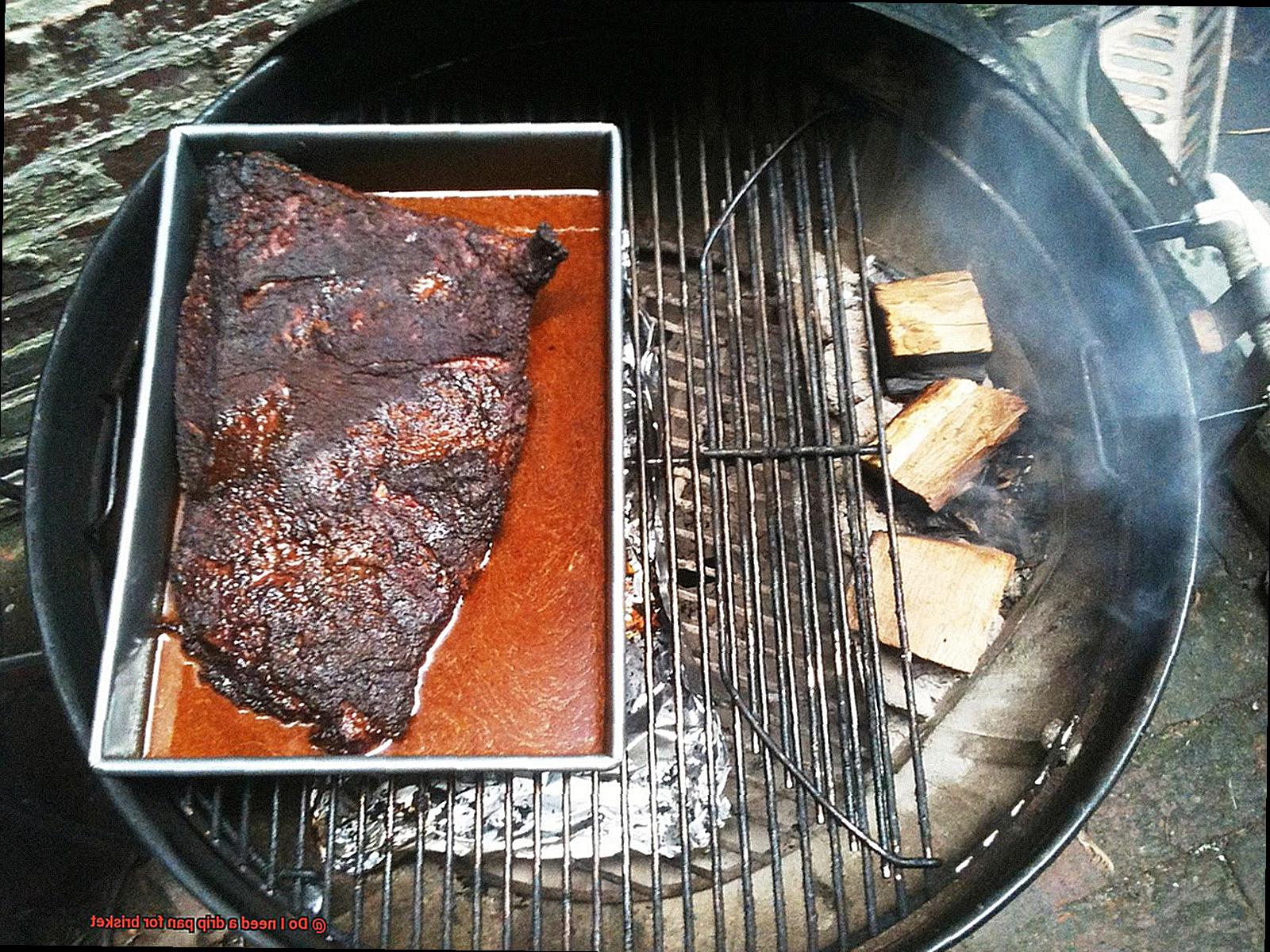
Achieving perfectly cooked brisket requires slow cooking over a long period of time. However, the fat dripping onto the flames can cause flare-ups and affect the flavor of your meat. The solution? A drip pan. Here are the different types of drip pans available on the market:
Disposable Aluminum Pans
These pans are affordable and easy to use, making them a popular choice among grillers. However, they can be flimsy and may not hold up well to high heat. If you’re looking for convenience and don’t want to worry about cleaning and storing a reusable pan, these are the perfect option for you.
Stainless Steel Drip Pans
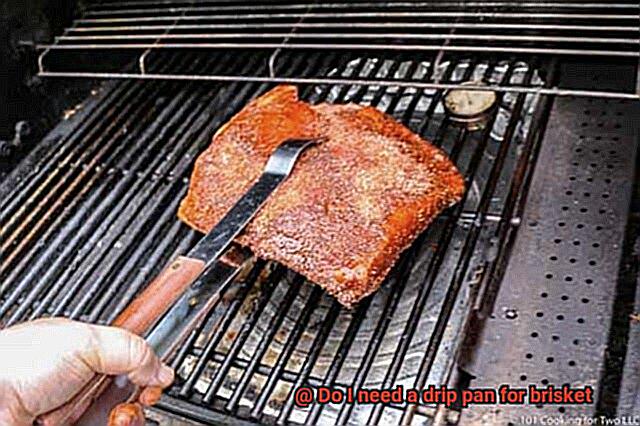
These pans are more durable than aluminum pans and can be reused multiple times. Not only that, but they tend to hold up better under high heat, making them ideal for brisket that requires longer cook times. The higher sides prevent spills and splatters, ensuring your grill stays clean.
Silicone Drip Mats
These mats are non-stick and easy to clean, perfect for those who want to minimize cleanup time. However, they may not hold up as well under high heat as stainless steel pans. Still, they are a great option for those who value convenience and ease of use.
Custom-Fit Drip Pans
If you’re looking for a perfect fit, some grill manufacturers sell custom-fit drip pans designed specifically for their grills. Though pricier than other options, these pans are typically made from high-quality materials and provide the best fit and performance.
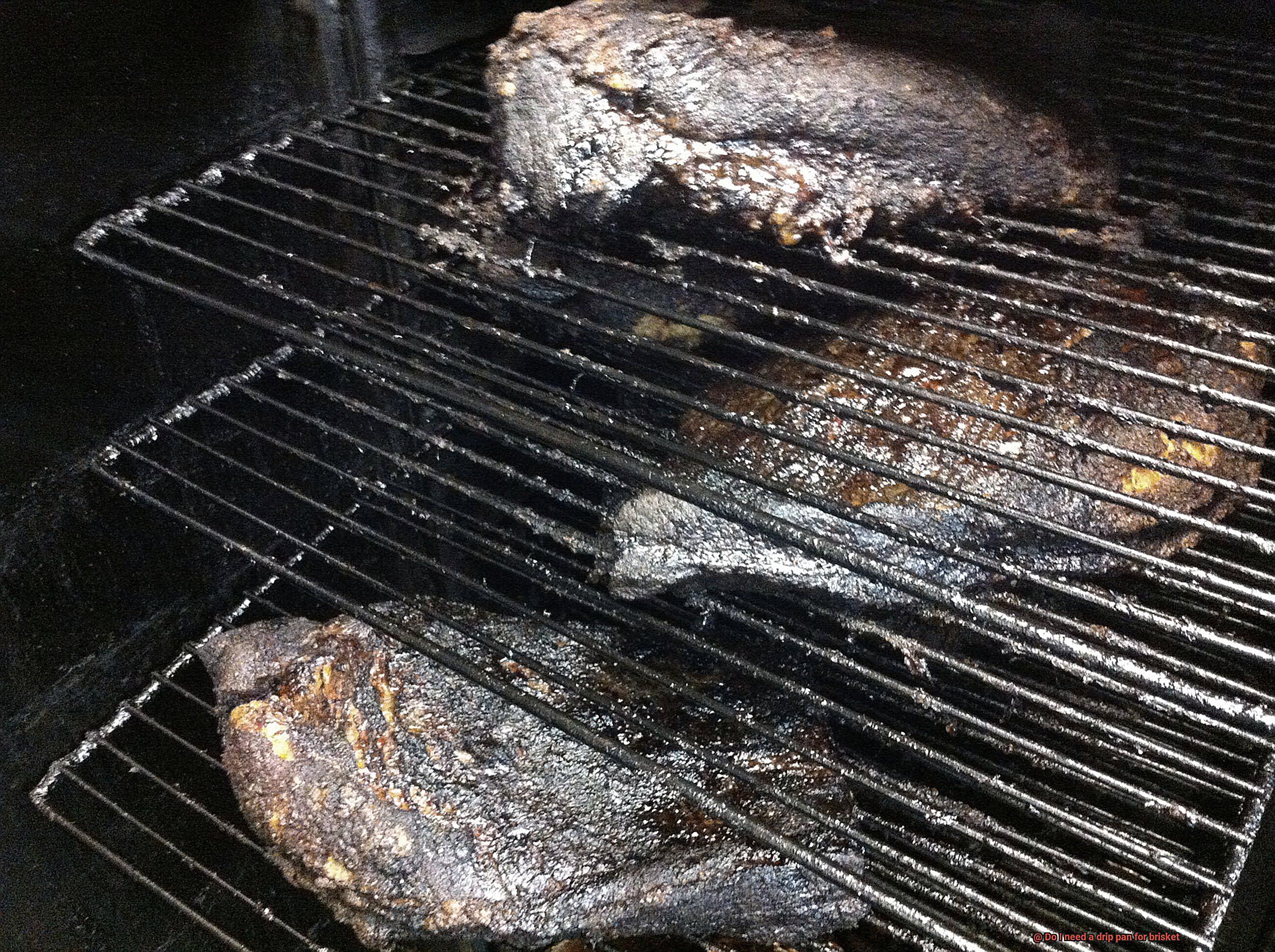
How to Choose the Right Drip Pan for Your Smoker
Smoking brisket is an art form, and having the right equipment is essential to achieving perfect results. One of the most overlooked pieces of equipment is the drip pan. A drip pan can make or break your brisket by preventing flare-ups and keeping your smoker clean. In this article, we’ll give you five tips on how to choose the perfect drip pan for your smoker.
Consider the Size
When choosing a drip pan, size matters. You want a pan that is big enough to catch all of the drippings without overflowing or causing a mess in your smoker. Measure the dimensions of your smoker and choose a pan that fits comfortably inside. Additionally, consider the size of the brisket you will be smoking to ensure that the pan can hold all of the drippings and juices.
Material Matters
The material of the drip pan is another crucial factor to consider. Most drip pans are made of either aluminum or stainless steel. Aluminum pans are affordable and lightweight, but they tend to warp and bend at high temperatures. Stainless steel pans, on the other hand, are more durable and can withstand high heat without warping. They may cost a bit more upfront, but they will last longer.
Shape is Important
The shape of the drip pan is also an important consideration. Some pans are flat and rectangular, while others are curved to fit snugly around the meat. Curved pans are great for brisket because they can catch all the drippings without taking up too much space in your smoker.
Perforated or Solid?
Another factor to consider is whether you want a perforated or solid drip pan. Perforated pans allow for better air circulation and can help prevent flare-ups, but they may also allow some drippings to fall through. Solid pans catch all of the drippings but may not allow for as much airflow.
Ease of Cleaning
Lastly, think about the ease of cleaning when choosing a drip pan. Look for pans that are dishwasher safe or have a non-stick coating for easy cleanup. You don’t want to spend hours scrubbing a dirty drip pan after a long day of smoking brisket.
Tips and Tricks for Cooking with a Drip Pan
If you’re a fan of brisket, then using a drip pan is a must-try technique to enhance its flavor and texture. A drip pan is a shallow tray that collects the excess juices and fat that the brisket releases while cooking, preventing it from burning off or evaporating. Here are five tips and tricks for cooking with a drip pan that will help you achieve the best results.
Firstly, selecting the right size of drip pan is crucial. It should be wide enough to catch all the juices that come off the brisket and deep enough to hold the liquid without overflowing. A small-sized pan will result in a mess, so make sure it’s at least as wide as your brisket.
Secondly, investing in a high-quality drip pan is essential for long-lasting use. A cheap pan may warp or bend under high temperatures, ruining your brisket and making clean-up a nightmare. A sturdy drip pan will ensure that it lasts longer and can withstand high temperatures without warping or bending.
Thirdly, adding aromatics such as onions, garlic, and herbs to your drip pan can infuse your brisket with extra flavor. As the juices from the brisket mix with these ingredients, they create a delicious sauce that can be used for serving.
Fourthly, placing the drip pan directly underneath the brisket on the grill grate prevents flare-ups and uneven cooking by catching any drippings that fall off the meat. This also allows for easy access to baste the meat throughout the cooking process.
Finally, keeping an eye on the liquid level in the drip pan is crucial to prevent overflow or flare-ups. If it gets too full, carefully remove some of the liquid with a ladle or spoon.
Alternatives to Using a Drip Pan
There are alternative methods that can take your brisket to the next level. As an expert in the field, I have done some research and compiled a list of the best alternatives to using a drip pan.
Firstly, using a water pan is an excellent option that can produce juicy and tender brisket. By placing a pan filled with water underneath the brisket on the grill, the water will create steam that keeps your brisket moist and tender. Additionally, any drippings will be caught by the water, preventing them from burning on the heat source.
Another option is to use a disposable aluminum pan. This is a great option if you want to keep your grill clean and avoid any mess. It’s important to make sure the pan is large enough to catch all of the juices and prevent any flare-ups.
Wrapping your brisket in foil or butcher paper during cooking is also an effective alternative that can enhance flavor and texture. This allows the brisket to cook in its own juices and retain moisture. It’s also a great way to prevent any drippings from burning on the heat source.
If you’re feeling adventurous, you can cook your brisket directly on the grill grates without any type of pan or wrapping. This method can produce a delicious crust on the outside of the meat and allow for more smoke flavor to penetrate the meat. However, this method requires close monitoring as flare-ups from dripping fat can occur.
umXRJdg18CI” >
Conclusion
After all is said and done, the question of whether or not to use a drip pan for brisket remains a matter of personal preference and cooking circumstances. While a drip pan can prevent flare-ups, simplify cleanup, and collect flavorful juices for sauces or gravies, it can also extend cooking time, alter the texture and taste of the meat, and be a bit of a hassle to clean.
When selecting a drip pan, it’s important to consider various factors such as size, material, shape, perforation, and ease of cleaning. Alternatively, you might opt for water pans, disposable aluminum pans, foil or butcher paper wrapping, or even cooking your brisket directly on the grill grates without any sort of pan or wrapping.
Ultimately though, experimentation is key to finding your perfect method for smoking up some mouth-watering brisket.

